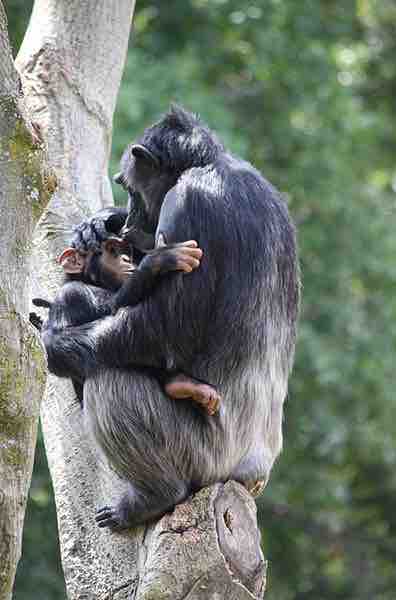Animal culture refers to cultural learning in non-human animals through socially transmitted behaviors. The question of the existence of culture in non-human societies has been a contentious subject for decades due to the inexistence of a concise definition for culture. However, many scientists agree on culture being defined as a process, rather than an end product. This process, most agree, involves the social transmission of a novel behavior, both among peers and between generations. This behavior is shared by a group of animals, but not necessarily between separate groups of the same species .

Animal Culture
A chimpanzee mother and baby.
Tools and Learned Activities
One of the first signs of culture in early humans was the use of tools. Chimpanzees have been observed using tools such as rocks and sticks to obtain better access to food. There are other learned activities that have been exhibited by animals as well. Some examples of these activities that have been shown by varied animals are opening oysters, swimming, washing food, and unsealing tin lids. The acquisition and sharing of behaviors correlates directly to the existence of memes, which are defined as "units of cultural transmission" by the evolutionary biologist Richard Dawkins. It especially reinforces the natural selection component. These learned actions are mechanisms for making life easier, and therefore longer.
History of Animal Culture
Though the idea of culture in animals has only been around for just over half of a century, scientists have been noting social behaviors of animals for centuries. Aristotle was the first to provide evidence of social learning in the bird songs. Charles Darwin first attempted to find the existence of imitation in animals when trying to prove his theory that the human mind had evolved from that of lower beings. Darwin was also the first to suggest what became known as 'social learning' in explaining the transmission of an adaptive behavior pattern throughout a population of honey bees.
Much cultural anthropological research has been done on non-human primates, due to their close evolutionary proximity to humans. In non-primate animals, research tends to be limited, so the evidence for culture is lacking. The subject has become more popular recently, prompting more research in the field.